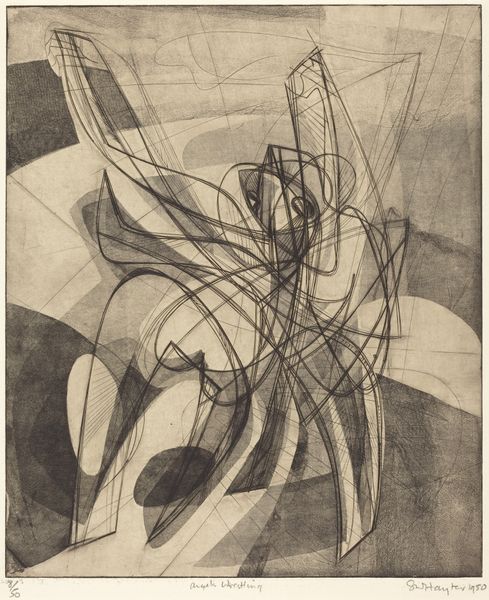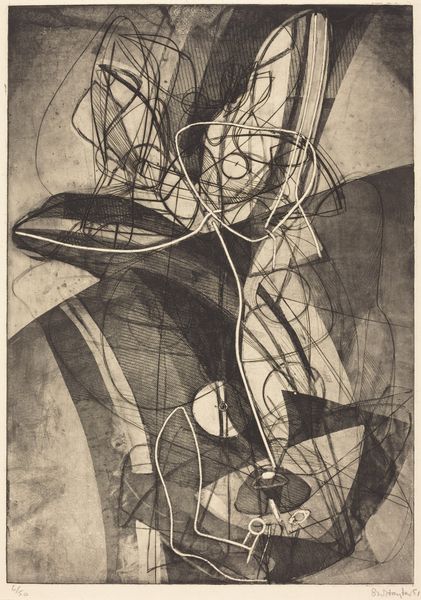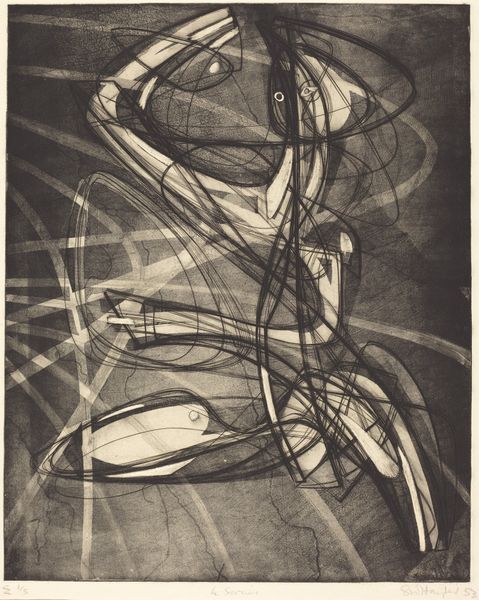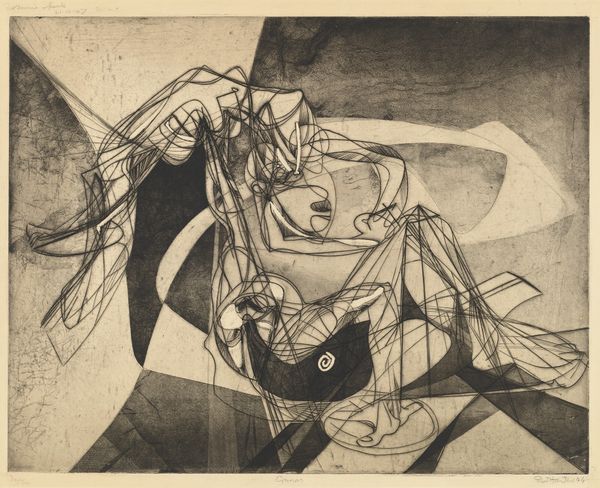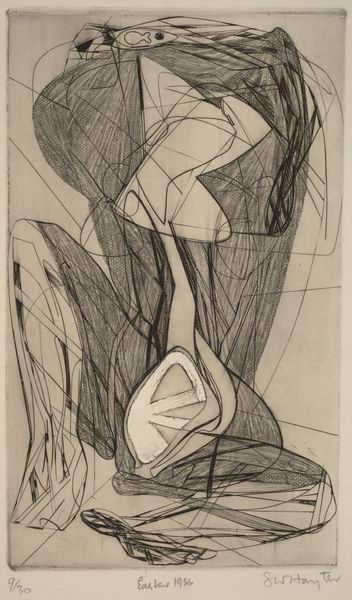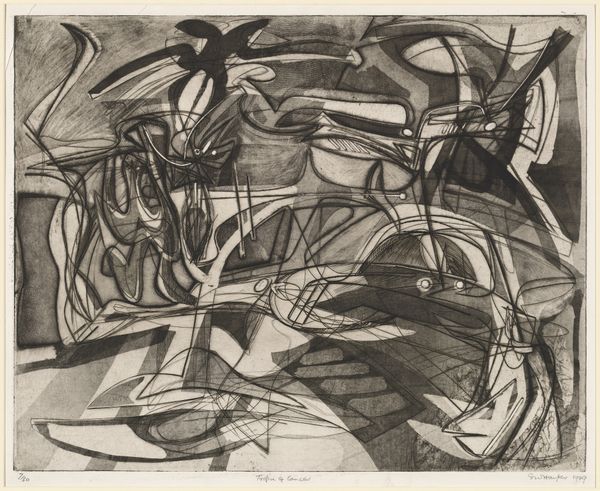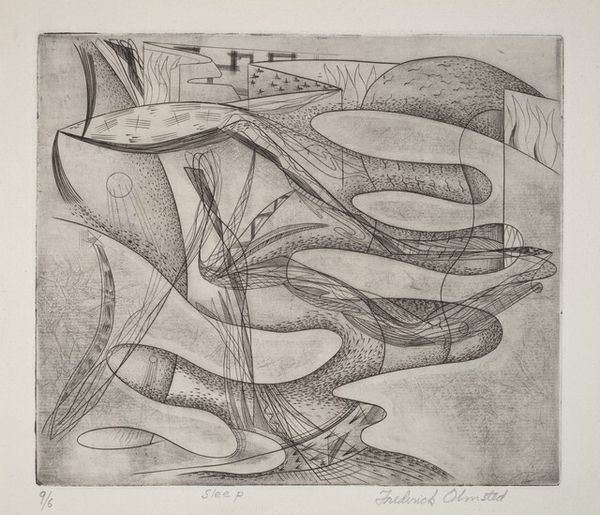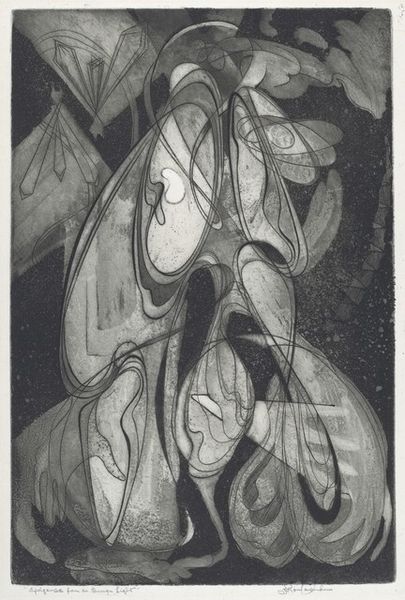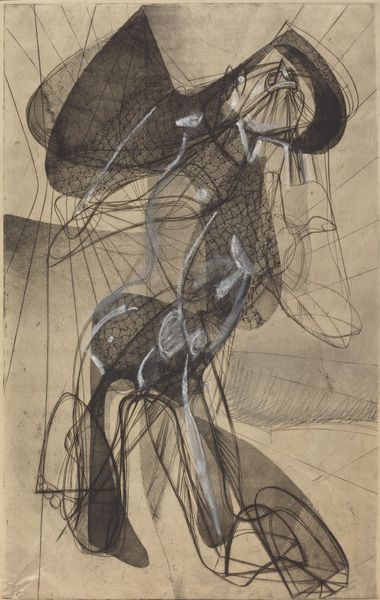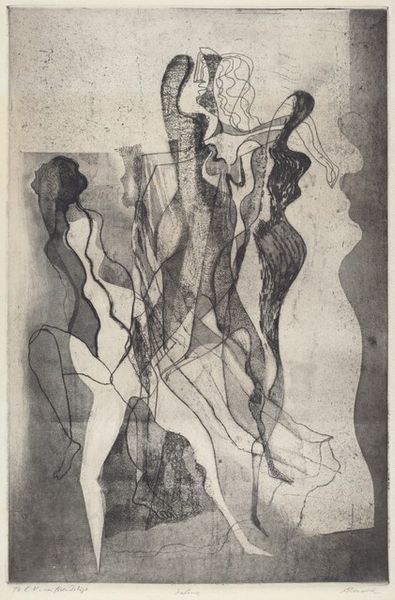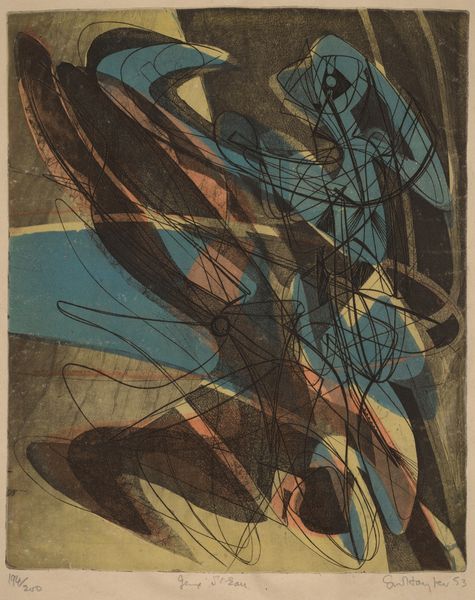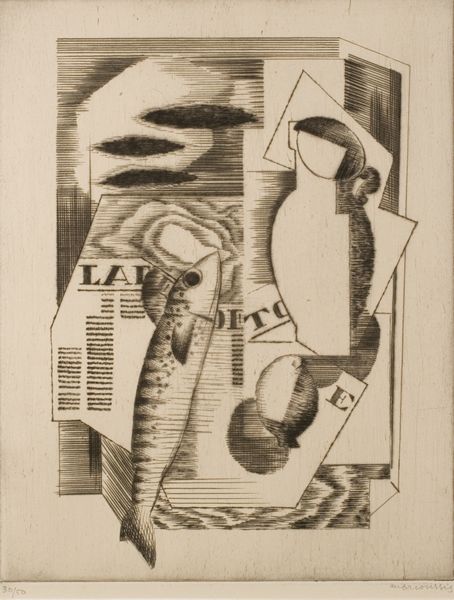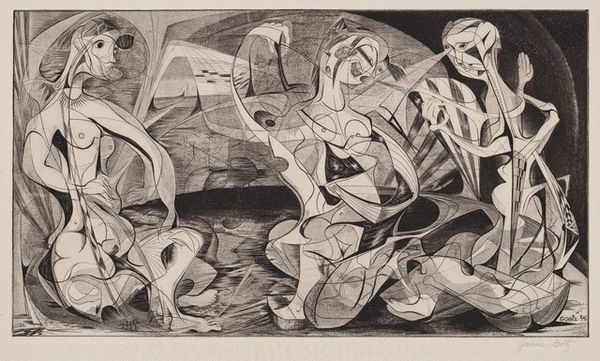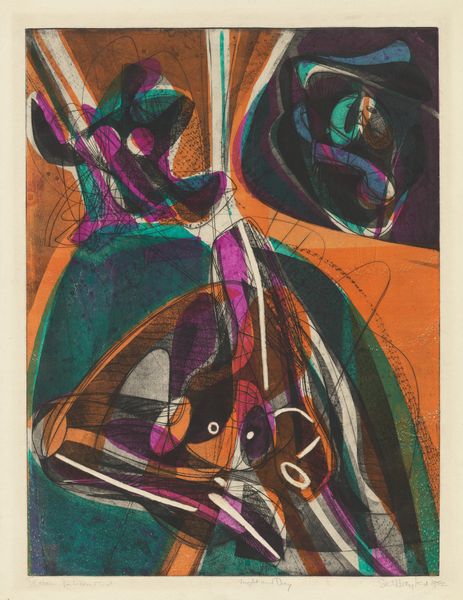
print, etching, intaglio
#
abstract-expressionism
# print
#
etching
#
intaglio
#
form
#
abstraction
#
line
Dimensions: plate: 60.3 x 45.4 cm (23 3/4 x 17 7/8 in.) sheet (irregular): 73 x 57.8 cm (28 3/4 x 22 3/4 in.)
Copyright: National Gallery of Art: CC0 1.0
Curator: "Night and Day," a print made using the intaglio and etching processes, dating from 1951-1954 and crafted by Stanley William Hayter. It’s a compelling work of abstract expressionism. Editor: My first impression is of a frenetic energy, almost overwhelming. It feels like peering into a chaotic dreamscape where forms struggle to define themselves. Curator: Absolutely. Let’s delve into that chaos, shall we? Hayter, you see, wasn’t just making pretty pictures. His unique approach to etching involved a meticulous manipulation of the metal plate—techniques related to the labor invested. He even invented tools to make unusual marks. This wasn’t about facile, easy beauty. It was pushing the boundaries of the printmaking medium itself. Editor: I'm seeing more than just formal exploration, though. Look at this piece as situated within its time. The post-war anxiety is palpable, a visual representation of a society grappling with immense change and trauma. Are the conflicting forms representing internal struggles? The breakdown of societal norms? It reads like more than abstract aesthetics to me. Curator: I agree there is underlying emotion. The labor required, however, for the piece needs more consideration. In some areas the density and layering achieved through color etching demanded incredibly difficult and precise gestures, so its aesthetic complexity arises from his sheer craft. Editor: Perhaps, but the tension in this artwork extends beyond the process. Considering the sociopolitical implications of post-war existentialism in which it was made gives Hayter's methods an extra layer of meaning. Think about identity. Curator: It’s all the means of production informing the aesthetic affect. Editor: The process serves the art and Hayter, though, in order to express this intersectionality during one of recent history's most crucial points, revealing insights of form through expression in the artist’s search for form’s relation to meaning and significance. Curator: So there is that consideration: is art born of ideas? Materials? A happy medium? Editor: Well, in Hayter’s print “Night and Day,” hopefully, our different angles have enriched visitors’ view and considerations of art! Curator: Exactly! It reveals how art making as both a social practice and skilled approach provides new lenses through which viewers might perceive it.
Comments
No comments
Be the first to comment and join the conversation on the ultimate creative platform.
